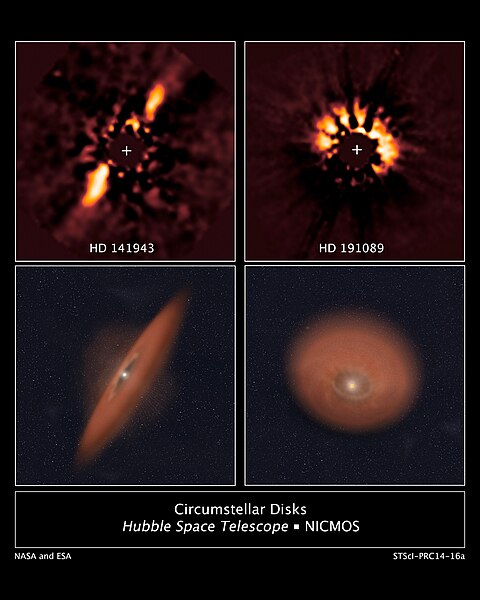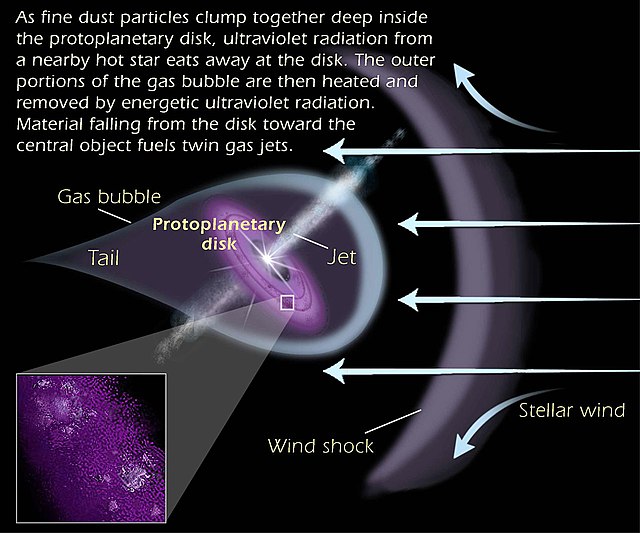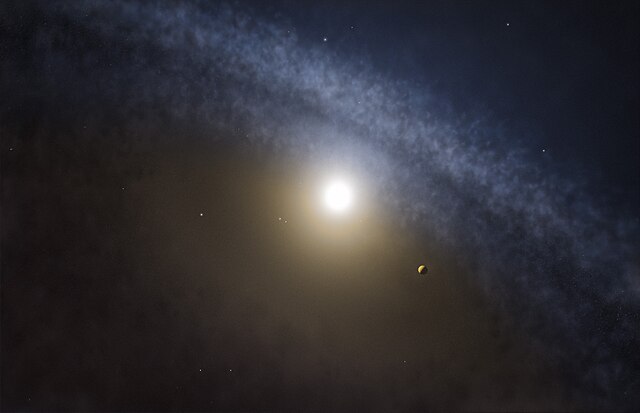The scattered disc (or scattered disk) is a distant circumstellar disc in the Solar System that is sparsely populated by icy small Solar System bodies, which are a subset of the broader family of trans-Neptunian objects. The scattered-disc objects (SDOs) have orbital eccentricities ranging as high as 0.8, inclinations as high as 40°, and perihelia greater than 30 astronomical units (4.5×109 km; 2.8×109 mi). These extreme orbits are thought to be the result of gravitational "scattering" by the gas giants, and the objects continue to be subject to perturbation by the planet Neptune.
Eris, the largest known scattered-disc object (center), and its moon Dysnomia (left of object)
Tempel 1, a Jupiter-family comet
A circumstellar disc is a torus, pancake or ring-shaped accretion disk of matter composed of gas, dust, planetesimals, asteroids, or collision fragments in orbit around a star. Around the youngest stars, they are the reservoirs of material out of which planets may form. Around mature stars, they indicate that planetesimal formation has taken place, and around white dwarfs, they indicate that planetary material survived the whole of stellar evolution. Such a disc can manifest itself in various ways.
Circumstellar discs HD 141943 and HD 191089.. The bottom images are illustrations of above real images.
Illustration of the dynamics of a proplyd
Artist's impression of a transitional disc around a young star.
Primordial cloud of gas and dust surrounding the young star HD 163296.






